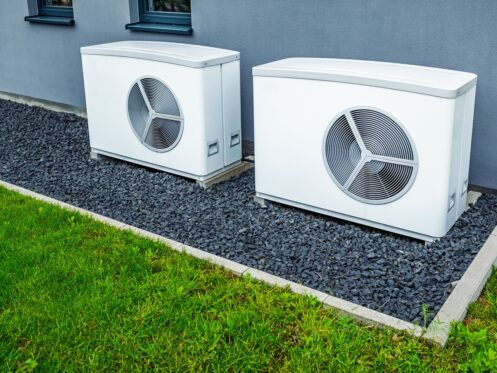The Best Heat Pump for Your Home should provide an energy-efficient way to maintain a comfortable indoor environment, regardless of your home’s size, age, or layout. These systems excel at regulating temperature year-round by transferring heat: during warmer months, they remove heat from inside your home, and in colder months, they draw warmth from the outside air and circulate it indoors. They operate on the same principle as a refrigerator, making them highly efficient and versatile. For comprehensive information about heat pump efficiency ratings and energy-saving benefits, visit the U.S. Department of Energy’s guide to heat pumps.
With a range of models to suit different needs and federal, state, and local incentives available, heat pumps are an appealing option for homeowners and renters alike
Looking for the Best Heat Pump for Your Home
Your home’s layout, ductwork availability, and outdoor space will help determine the type of heat pump that best suits your needs. Below we have explained several of the most popular options:
1. Standard Heat Pump Systems
If your home has an existing ducted HVAC system, a standard heat pump is an excellent choice. These systems can seamlessly replace your current furnace and air conditioner, offering both heating and cooling in a single unit.
A standard heat pump consists of two main components: an outdoor condenser and an indoor air handler. The condenser moves heat in or out of your home, while the air handler distributes conditioned air through your ductwork. A contractor can evaluate your ductwork to ensure it is well-sealed and properly sized for optimal performance, making the transition to a heat pump straightforward and cost-effective.
2. Ducted Mini-Split Systems
Ducted mini-split systems offer a flexible solution for homes with limited outdoor space. Unlike standard systems, they feature a smaller outdoor condenser and a separate indoor air handler connected via refrigerant lines. The air handler is linked to your home’s duct system, delivering both heating and cooling to various areas.
This setup is ideal for homes where space for a large outdoor unit is limited. It combines the efficiency of a heat pump with the flexibility of a mini-split design, making it a great option for many homeowners.
3. Ductless Mini-Split Systems
For homes without ductwork, ductless mini-split systems provide an efficient and versatile option. These systems allow you to control the temperature in each room independently, ensuring energy is used only where needed.
A ductless mini-split includes a small outdoor condenser connected to individual indoor air handlers, which can be mounted on walls or recessed into ceilings. Each air handler operates independently, giving you the flexibility to customize comfort levels in different areas of your home. This makes ductless systems ideal for retrofits, older homes, or spaces that rely on baseboard heating.
4. Packaged Terminal Heat Pumps (PTHPs)
If you have a small home or apartment, lack outdoor space, or are unable to make significant modifications to your property, a packaged terminal heat pump (PTHP) could be the perfect fit. These all-in-one systems are installed through a wall and provide both heating and cooling.
PTHPs are commonly used in hotels due to their compact design, but they are also well-suited for residential use, especially in areas with space constraints.
5. Plug-In Window Heat Pumps
For renters or those seeking a temporary solution, plug-in window heat pumps are an excellent option. These units are easy to install, operate on standard 120V outlets, and provide efficient heating and cooling without requiring professional installation.
Window heat pumps are designed to work in a variety of climates and are perfect for apartments or homes where permanent changes are not an option. Their straightforward design makes them a popular choice for anyone looking for a simple, effective way to control indoor temperatures.
Call or Contact us today for the most reliable heat pump service in Hermosa Beach, CA!






